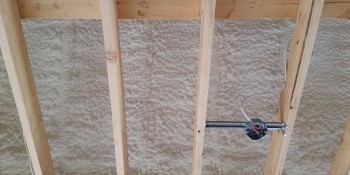Home » Archives for August 2018
Friday, August 31, 2018
Polyurethane Foam Systems
NCFI’s TerraThane Geotechnical Polyurethane Foam Systems
0 0 0
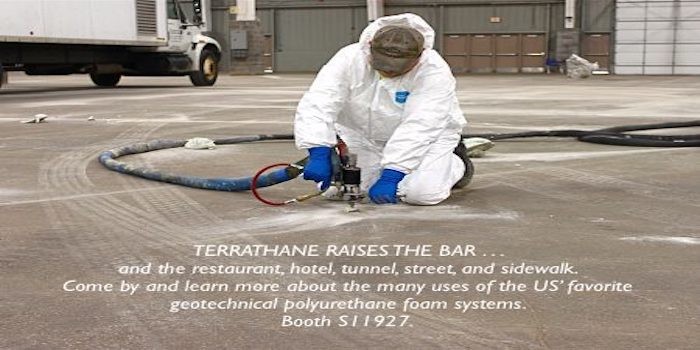
What is it?
TerraThane is the brand name for a series of polyurethane foam systems formulated for residential and commercial geotechnical uses. TerraThane is an innovative leader in concrete lifting and leveling, foundation repair, infrastructure remediation, erosion control, pipeline trench breaker, or mine reclamation.
Why is it unique?
EASY TO APPLY
Since our foams cure in minutes—most solutions exhibit 90% of full compression strength after 15 minutes—large surface areas can be lifted and reopened during application. This allows for swift construction and minimal waste.
Lower overhead costs
The ease of application contributes to less time working, as does the fact that many of our geotechnical foam solutions can be applied by a two-man crew. These factors all translate to fewer paid man-hours, and lower overall job costs.
Scorch-free processing
Our geotechnical foam solutions are designed to be built up in great lift thickness without scorching or foam splitting. During application, our systems have low exo-therm heat transfer, which eliminates additional spray passes and ensures quick construction.
Moisture tolerant and resistant
Though our solutions are injected into wet areas, they will maintain their physical characteristics during reaction and expansion. Plus, the high-density, closed-cell nature of geotechnical foam makes them resistant to water penetration
Exceptional inter-layer adhesion
Due to high structural compressive strength providing strong inter-layer adhesion, our solutions ensure a strong monolithic barrier, one that outperforms sand bags. NCFI’s geotechnical foam systems don’t shift and settle afterwards, which means long-term erosion issues are reduced.
Completely conformable
During the injection process, geotechnical foam will flow freely into cracks and voids, ultimately expanding to its final in-place density—which is normally greater than its free-rise density. Free-rise density is determined without any loads or restrictions placed on the geotechnical foam.
Legendary NCFI support
As the American pioneer of polyurethane foam we’ve developed some of the most used and appreciated foam solutions for industrial, commercial, and geotechnical applications. As industry experts, we offer full field service and support for equipment, application and equipment training, and replacement parts.
Polyurethane Foam and Caulking Guns Subsidiary Opens in USA
Polyurethane Foam and Caulking Guns Subsidiary Opens in USA
0 0 1
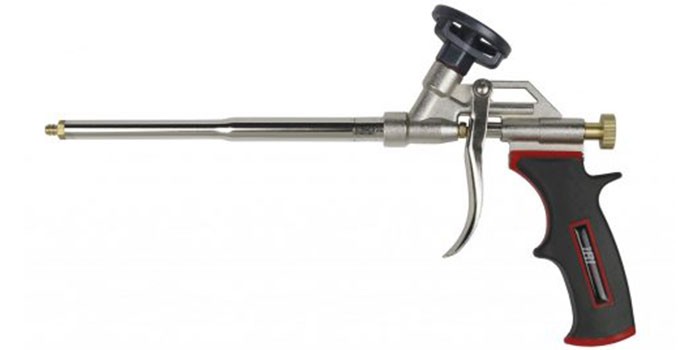
Irion Vertriebs GmbH, a German based manufacturer of dispensing tools and foam gun products worldwide, recently announced the launch of Irion- America, LLC (www.irion-america.com), a United States based sales and distribution subsidiary.
Irion-America was formed in July 2017. As a manufacturer of high quality polyurethane foam and caulking guns, Irion-America is now stocking these elite products in the United States. This allows for a superior line of applicators to be delivered within a few days to North American customers.
“We recognized a demand in the U.S. & Canadian market for higher quality products and are up to the challenge to provide North American businesses with the reliable products they need,” said Thomas Irion, CEO of Irion. “With the launch of Irion-America, we plan to build the highest market share in North America.”
Last year alone, Irion sold over 3 million foam and 3 million caulking guns worldwide and expect that number to significantly increase because of the demand in this market. In addition, due to climate change and potential environmental rules and regulations, residential houses and industrial buildings may need to be insulated in a more professional way. Conventional technologies such as nailing and stapling are being replaced by gluing and bonding with polyurethane foam as well as innovative adhesives and sealants of which Irion has developed special guns.
Orders can be placed by emailing: pete@irion-america.com
About Irion
Irion has been a premier producer of high quality caulking and PU foam guns for more than 20 years. The combination of German engineering and on-site quality control along with the most cost effective manufacturing process has made Irion products number one in the global market. Irion's production facility in Shanghai, China operates under the strictest test standards maintaining certificates. Having all our operations from manufacturing through distribution in one company provides unique capabilities for creating customized features and private label products as well as reducing costs and delays. Irion is strongly committed to sustainable, environmentally friendly technologies and fair treatment of employees. Their expertise is appreciated by retailers and specialized wholesalers both nationally and internationally.
By: Irion-America on Jul 20, 2018
Categories: Equipment Manufacturers
Categories: Equipment Manufacturers
Polyurethane Foam ASTM Test Methods
Polyurethane Foam ASTM Test Methods
General Information about ASTM Test Methods for rigid polyurethane foam
(ASTM D1621) Standard Test Method for Compressive Properties of Rigid Cellular Plastics - This test method describes a procedure for determining the compressive properties of rigid cellular materials, particularly expanded plastics, based on test machine crosshead motion.
(ASTM D1622) Standard Test Method for Apparent Density of Rigid Cellular Plastics - This test method covers the determination of both the apparent overall density and the apparent core density of cellular plastics. It is primarily intended for rigid cellular plastics.
(ASTM D1623) Standard Test Method for Tensile and Tensile Adhesion Properties of Rigid Cellular Plastics - This test method covers the determination of the tensile and tensile adhesion properties of rigid cellular materials in the form of test specimens of standard shape under defined conditions of temperature, humidity, and testing machine speed.
(ASTM D2126) Standard Test Method for Response of Rigid Cellular Plastics to Thermal and Humid Aging - This test method covers procedures for the thermal and humid exposure of rigid cellular plastics. Conditions used shall be agreed upon between the purchaser and the supplier.
(ASTM D2842) Standard Test Method for Water Absorption of Rigid Cellular Plastics - This test method covers the determination of the water absorption of rigid cellular plastics by measuring the change in buoyant force resulting from immersion under a 5.1-cm (2-in.) head of water for the specified immersion period for 96 h is standard.
(ASTM D2856) Standard Test Method for Open Cell Content of Rigid Cellular Plastics By the Air Pycnometer - This test method determines numerical values for open cells. It is a porosity determination, measuring the accessible cellular volume of a material. The volume occupied by closed cells is considered to include cell walls. Since any conveniently sized specimen can only be obtained by some cutting operation, a fraction of the closed cells will be opened during sample preparation and will be included as open cells.
(ASTM D6226) Standard Test Method for Open Cell Content of Rigid Cellular Plastics [Gas Pycnometer] - This test method determines numerical values for open cells. It is a porosity determination, measuring the accessible cellular volume of a material. The remaining volume is that occupied by closed cells and cell walls. Since any conveniently sized specimen can only be obtained by some cutting operation, a fraction of the closed cells will be opened by specimen preparation and will be included as open cells.
(ASTM D3576) Standard Test Method for Cell Size of Rigid Cellular Plastics - This test method covers the determination of the apparent cell size of rigid cellular plastics by counting the number of cell-wall intersections in a specified distance.
R-Value Test Methods
(ASTM C 518) Standard Test Method for Steady-State Thermal Transmission Properties by Means of the Heat Flow Meter Apparatus - This test method covers the measurement of steady state thermal transmission through flat slab specimens using a heat flow meter apparatus.
(ASTM C 177) Standard Test Method for Steady-State Heat Flux Measurements and Thermal Transmission Properties by Means of the Guarded-Hot-Plate Apparatus - This test method covers the achievement and measurement of steady-state heat flux through flat-slab specimens using a guarded-hot-plate apparatus. The method encompasses both the single-sided and the double-sided mode of measurement. Both distributed and line source guarded heating plate designs are included, in principle, in this test method. The reader should consult the standard practices on the single-sided mode of operation and on the line source apparatus for further details on these variations of the method.
Exposure to SPF Chemicals
Exposure to SPF Chemicals
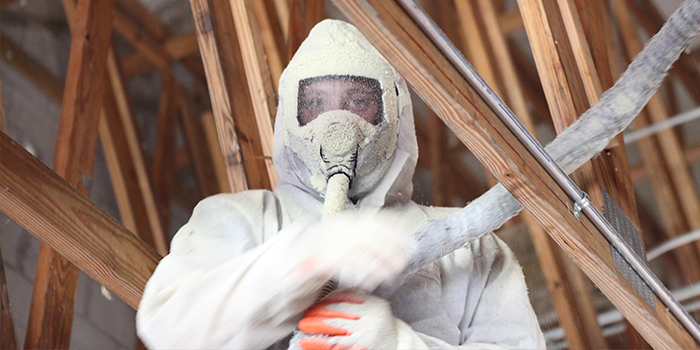
Exposure Potentials of SPF Chemicals
Chemical exposures from SPF can happen several ways, and there are both short-term and long-term exposure risks.
Vapors and Aerosols
Spray application generates isocyanate vapors and aerosols, and inhalation during an SPF installation will typically exceed OSHA occupational exposure limits (OELs). So, skin, eye, and respiratory protection are required. Furthermore, vapors and aerosols can migrate through the building if the area is not isolated and properly ventilated, and after an application, vapors may linger in a building until properly ventilated and thoroughly cleaned. This is why ventilation and strict adherence to reoccupancy time are so important.
Dust
Cutting or trimming the foam as it hardens can generate dust that may contain unreacted isocyanates and other chemicals. After application, dust may linger in a building until properly ventilated and thoroughly cleaned.
Fires and Heat-Generating Processes
When ignited in a fire, spray foam may release a number of chemicals, including carbon monoxide (CO), hydrochloric acid (HCL), hydrogen cyanide (HCN), nitrous oxide (NO), and other toxic chemicals into the air, per the EPA. Fire departments have issued advisories and require the use of full supplied air respirators when fighting polyurethane fires. Also, any heat-generating processes such as drilling, welding, soldering, grinding, sawing, or sanding on or near the foam insulation may generatethese airborne chemicals.
Long-Term Exposure Potential?
After spray foam is applied and cured, it is considered to be relatively inert. However, there are several situations where the cured foam may pose additional potential risks. Maintenance workers, including plumbers and electricians, should not heat or grind spray foam, as it can potentially generate toxic emissions under these circumstances. Building renovations, demolition, or building disassembly done years later can disturb spray foam insulation or physically damage it, resulting in potentially dangerous
Potential Off-Gassing?
Per the EPA, “the potential for off-gassing of volatile chemicals from spray polyurethane foam is not fully understood and is an area where more research is needed.”
LATEST NEWS
- Exposure to SPF Chemicals
Spray Foam Safety Guide
Spray Foam Safety Guide
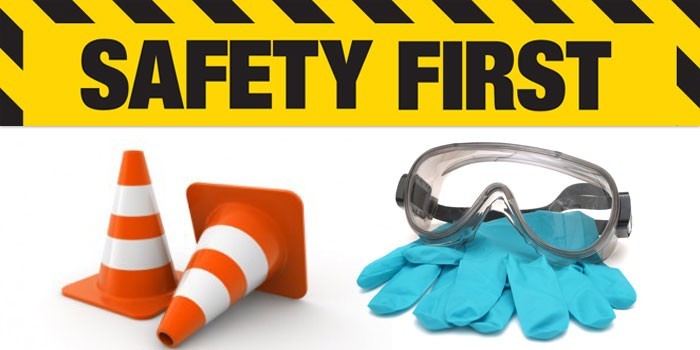
Spray Polyurethane Foam Health & Safety
Spray polyurethane foam (SPF) is a highly effective and widely used insulation and air sealant material. However, exposure to the chemical components that react to make SPF can pose serious health risks. Whether you are an applicator, assistant, or building occupant where this product is applied, follow these tips:
- Review the label and product information for chemical ingredients, hazards, directions, safe work practices, and precautions.
- Ensure health and safety training is completed and safe work practices are followed to prevent exposure before, during, and after an installation.
- Exercise caution when determining a safe reoccupancy time for unprotected occupants and workers based on the manufacturer recommendation
- During a spray foam application, only workers wearing appropriate personal protective equipment (PPE) should be present. Other trade workers and building/home occupants should vacate the premises. If anyone experiences breathing problems or other adverse health effects during or after an SPF application, seek immediate medical attention.
Spray Foam Health and Safety Initiatives
With the use of spray polyurethane foam (SPF) expected to increase over the coming decades, trade associations like the Spray Polyurethane Foam Alliance (SPFA) and the Center for the Polyurethanes Industry (CPI) of the American Chemistry Council (ACC) are working on safety, training, and product stewardship programs intended to enhance professional SPF contractors’ understanding of the safe application and handling practices of spray foam. These important initiatives will also reach beyond professionals to homeowners and those in the building and construction community.
Find out more about SPFA’s Professional Certification Program (PCP).
Find out more about SPF product stewardship from CPI.
Subscribe to:
Posts
(
Atom
)
Forum Posts
-
Spray Foam Safety Guide Spray Polyurethane Foam Health & Safety Spray polyurethane foam (SPF) is a highly effective and widely ...
-
NCFI’s TerraThane Geotechnical Polyurethane Foam Systems 0 0 0 Prev Next What is it? TerraT...
-
Polyurethane Foam and Caulking Guns Subsidiary Opens in USA 0 0 1 Prev Next Irion Vertriebs GmbH, a German...
-
Polyurethane Foam ASTM Test Methods General Information about ASTM Test Methods for rigid polyurethane foam (ASTM D1621) Standard Te...
-
Exposure to SPF Chemicals Exposure Potentials of SPF Chemicals Chemical exposures from SPF can happen several ways, and there are ...
-
It doesn't matter if you're renovating or buying a house new, the insulation you choose matters more than you realize. ArmorFoam...
-
Spray-Foam Insulation Discover the advantages and disadvantages of spray polyurethane foam-- a high-performance material discovered in the w...






